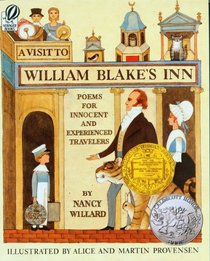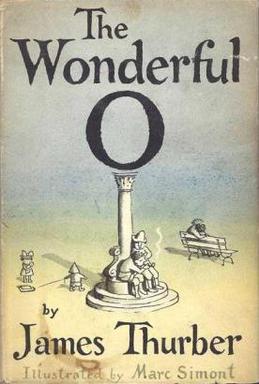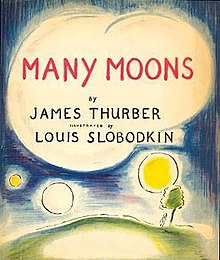Ruth Ida Krauss was an American writer of children's books, including The Carrot Seed, and of theatrical poems for adult readers. Many of her books are still in print.
Leo Dillon and Diane Dillon were American illustrators of children's books and adult paperback book and magazine covers. One obituary of Leo called the work of the husband-and-wife team "a seamless amalgam of both their hands". In more than 50 years, they created more than 100 speculative fiction book and magazine covers together as well as much interior artwork. Essentially all of their work in that field was joint.
Trina Schart Hyman was an American illustrator of children's books. She illustrated over 150 books, including fairy tales and Arthurian legends. She won the 1985 Caldecott Medal for U.S. picture book illustration, recognizing Saint George and the Dragon, retold by Margaret Hodges.

The 13 Clocks is a fantasy tale written by James Thurber in 1950, while he was completing one of his other novels. It is written in a unique cadenced style, in which a mysterious prince must complete a seemingly impossible task to free a maiden from the clutches of an evil duke. It invokes many fairy tale motifs.
Louis Slobodkin was an American sculptor, writer, and illustrator of numerous children's books.

David Wiesner is an American illustrator and writer of children's books, known best for picture books including some that tell stories without words. As an illustrator he has won three Caldecott Medals recognizing the year's "most distinguished American picture book for children" and he was one of five finalists in 2008 for the biennial, international Hans Christian Andersen Award, the highest recognition available for creators of children's books.

A Visit to William Blake's Inn: Poems for Innocent and Experienced Travelers is a children's picture book written by Nancy Willard and illustrated by Alice and Martin Provensen, published by Harcourt Brace in 1981. The next year Willard won the annual Newbery Medal and the Provensens were one runner-up for the Caldecott Medal from the professional children's librarians. William Blake's Inn was the first Newbery-winning book to also be named a Caldecott Honor Book. Last Stop on Market Street later won the 2016 Newbery Medal and a Caldecott Honor.
Barbara Cooney was an American writer and illustrator of 110 children's books, published over sixty years. She received two Caldecott Medals for her work on Chanticleer and the Fox (1958) and Ox-Cart Man (1979), and a National Book Award for Miss Rumphius (1982). Her books have been translated into 10 languages.
Dorothy Pulis Lathrop was an American writer and illustrator of children's books.

"The Unicorn in the Garden" is a short story written by James Thurber. One of the most famous of Thurber's humorous modern fables, it first appeared in The New Yorker on October 21, 1939; and was first collected in his book Fables for Our Time and Famous Poems Illustrated. The fable has since been reprinted in The Thurber Carnival, James Thurber: Writings and Drawings, The Oxford Book of Modern Fairy Tales, and other publications. It is taught in literature and rhetoric courses.
Marc Simont was a Paris-born American artist, political cartoonist, and illustrator of more than a hundred children's books. Inspired by his father, Spanish painter Joseph Simont, he began drawing at an early age. Simont settled in New York City in 1935 after encouragement from his father, attended the National Academy of Design with Robert McCloskey, and served three years in the military.
Janice May Udry is an American author of children's literature, primarily of picture books.

The White Deer is a 96 page children's novel written by James Thurber in 1945. It is a fairy tale about the quest of the three sons of King Clode – Thag and Gallow, the hunters, and Jorn, the poet – who are set perilous tasks to win the heart and hand of a princess who had once been a beautiful white deer, but lost her memories.

Audrey Wood is an American children's author. She is known as the author of The Napping House, which, as of 2015, has sold over 2.1 million copies worldwide. Wood resides in Santa Barbara, California.
Edgar Eugene Summerlin was an American jazz saxophonist, composer, and educator known for pioneering Liturgical jazz, avant-garde jazz, and free jazz.
Karla Kuskin was a prolific American author, poet, illustrator, and reviewer of children's literature. Kuskin was known for her poetic, alliterative style.

Alice of Wonderland in Paris or Alice in a New Wonderland is a 1966 Czech-American animated film directed by Gene Deitch and produced by William L. Snyder in extreme limited animation.
Charlotte Barrows Chorpenning was an American children's playwright. When she was 60 years old, after her husband died, she began writing plays for children. She was also the artistic director of the children's theatre at the Goodman Theater in Chicago, and remains the most produced playwright in Goodman history. She adapted many famous fairy and folktales. She believed that children would come to see plays about characters they knew already. She also strongly believed that plays should not talk down to children, and that children should be able to identify with the lead. Chorpenning described her writing and directing process in her book, Twenty-One Years With Children's Theatre, published in 1954.

The Wonderful O is the last of James Thurber’s five short-book fairy tales for children. Published in 1957 by Hamish Hamilton/Simon Schuster, it followed Many Moons (1943), The Great Quillow (1944), The White Deer (1945) and The 13 Clocks (1950).
Anita Lobel is a Polish-American illustrator of children's books, including On Market Street, written by her husband Arnold Lobel and a Caldecott Honor Book for illustration, A New Coat for Anna, Alison's Zinnia, and This Quiet Lady. One Lighthouse, One Moon, one of three books she created about her cat, Nini, is a New York Times Best Illustrated Book. Her childhood memoir, No Pretty Pictures, was a finalist for the National Book Award.








